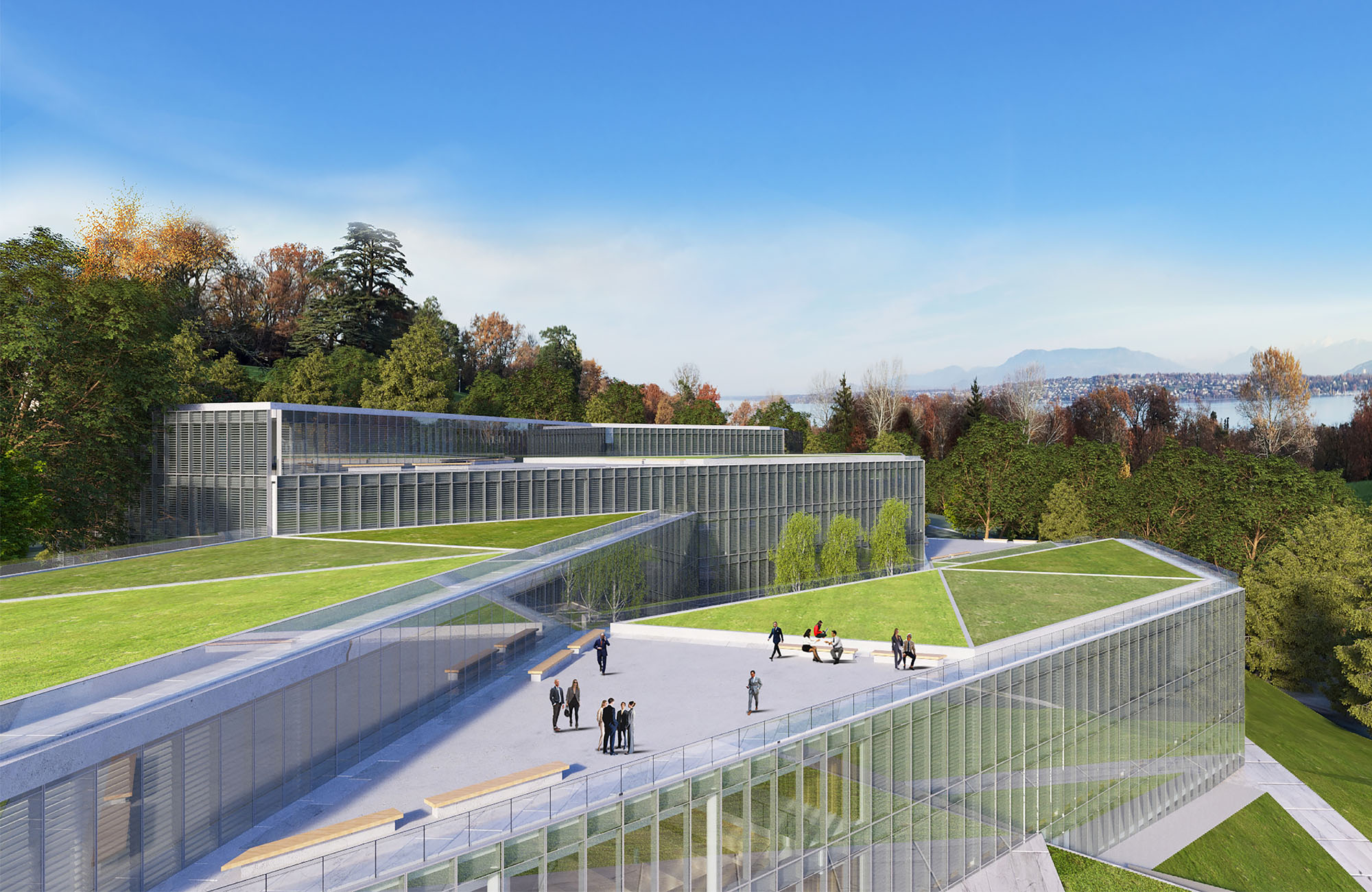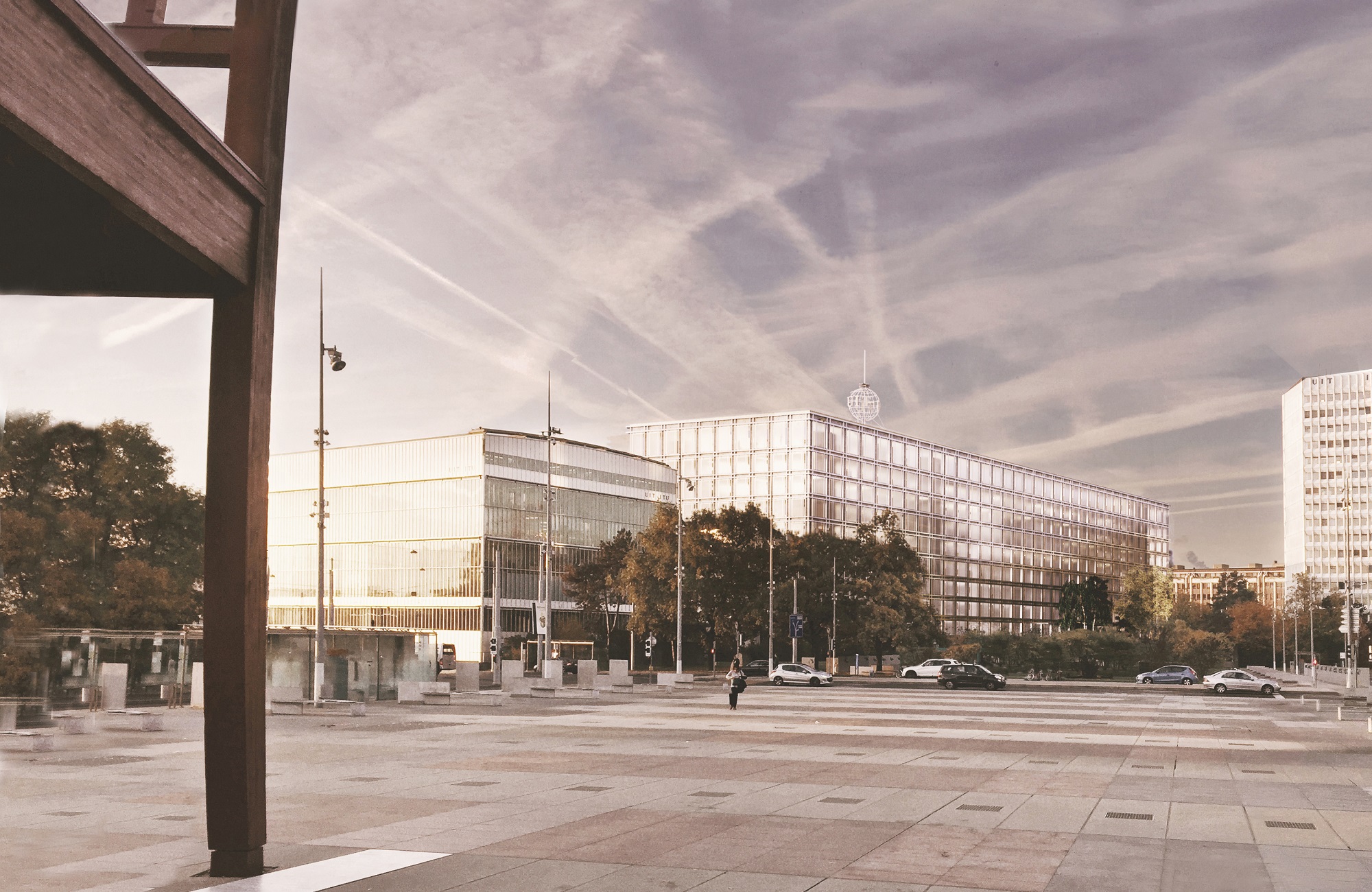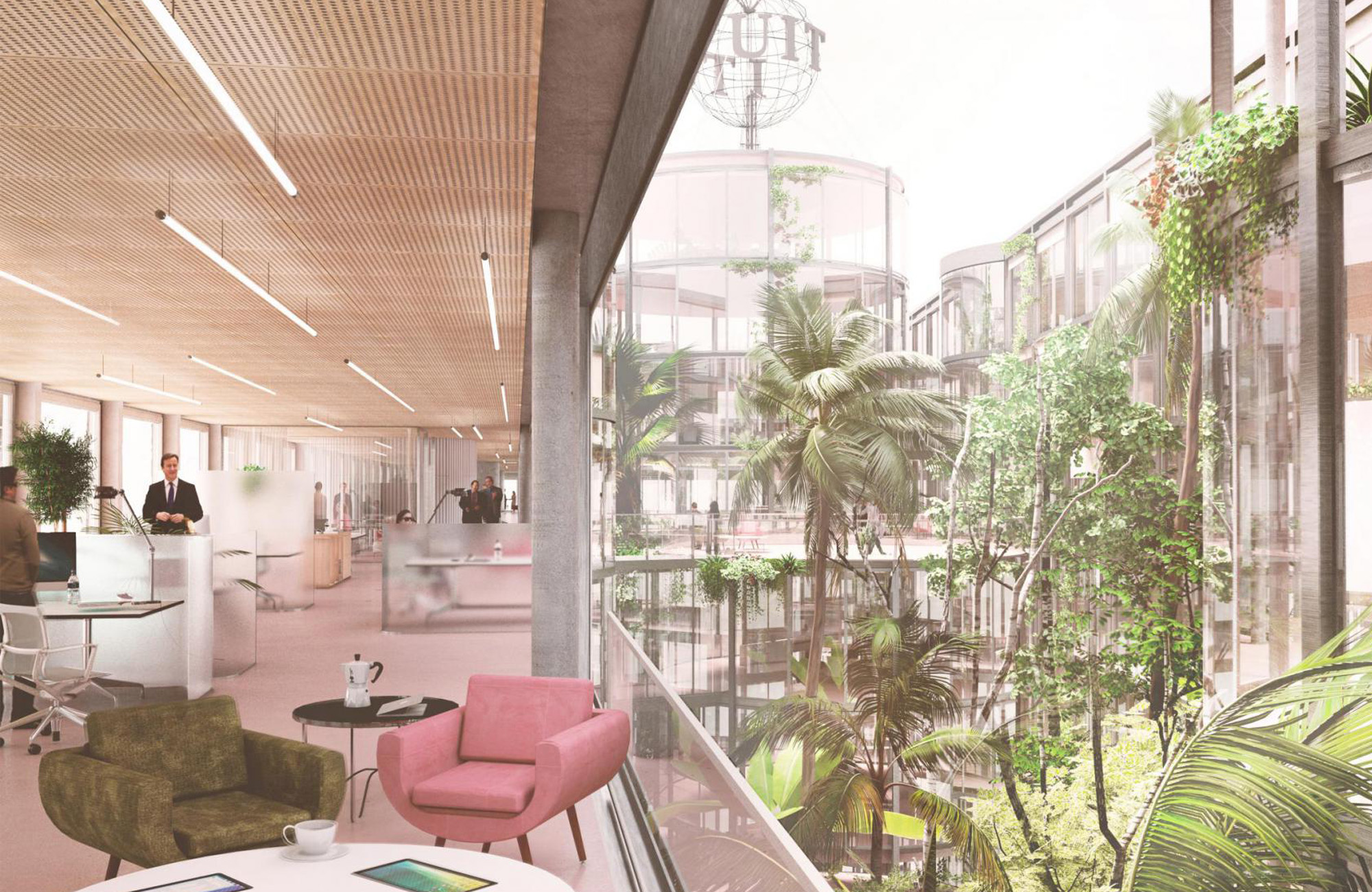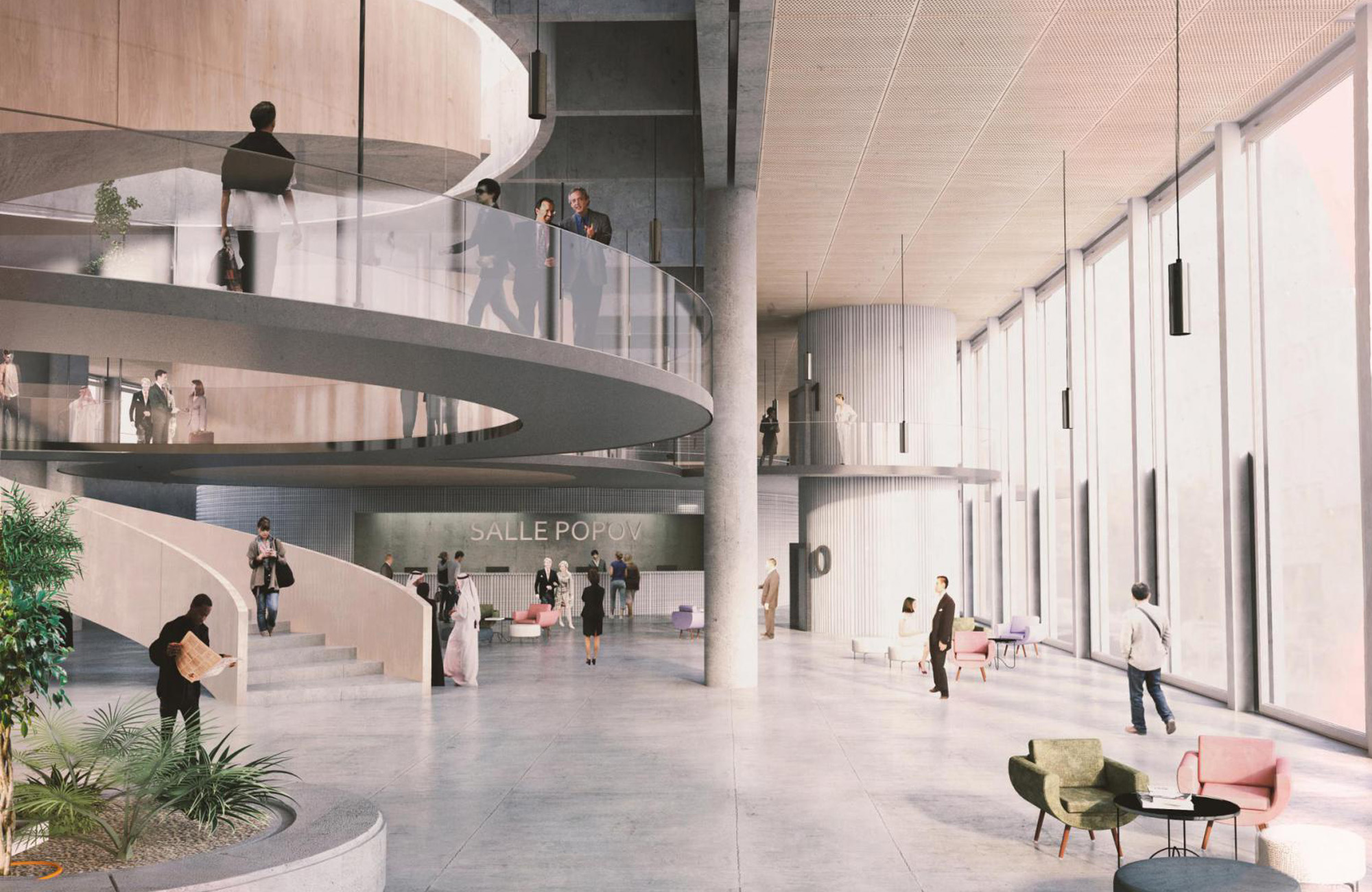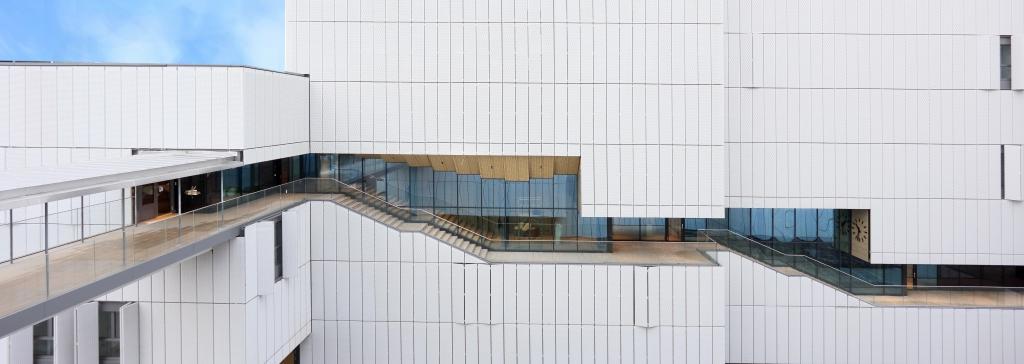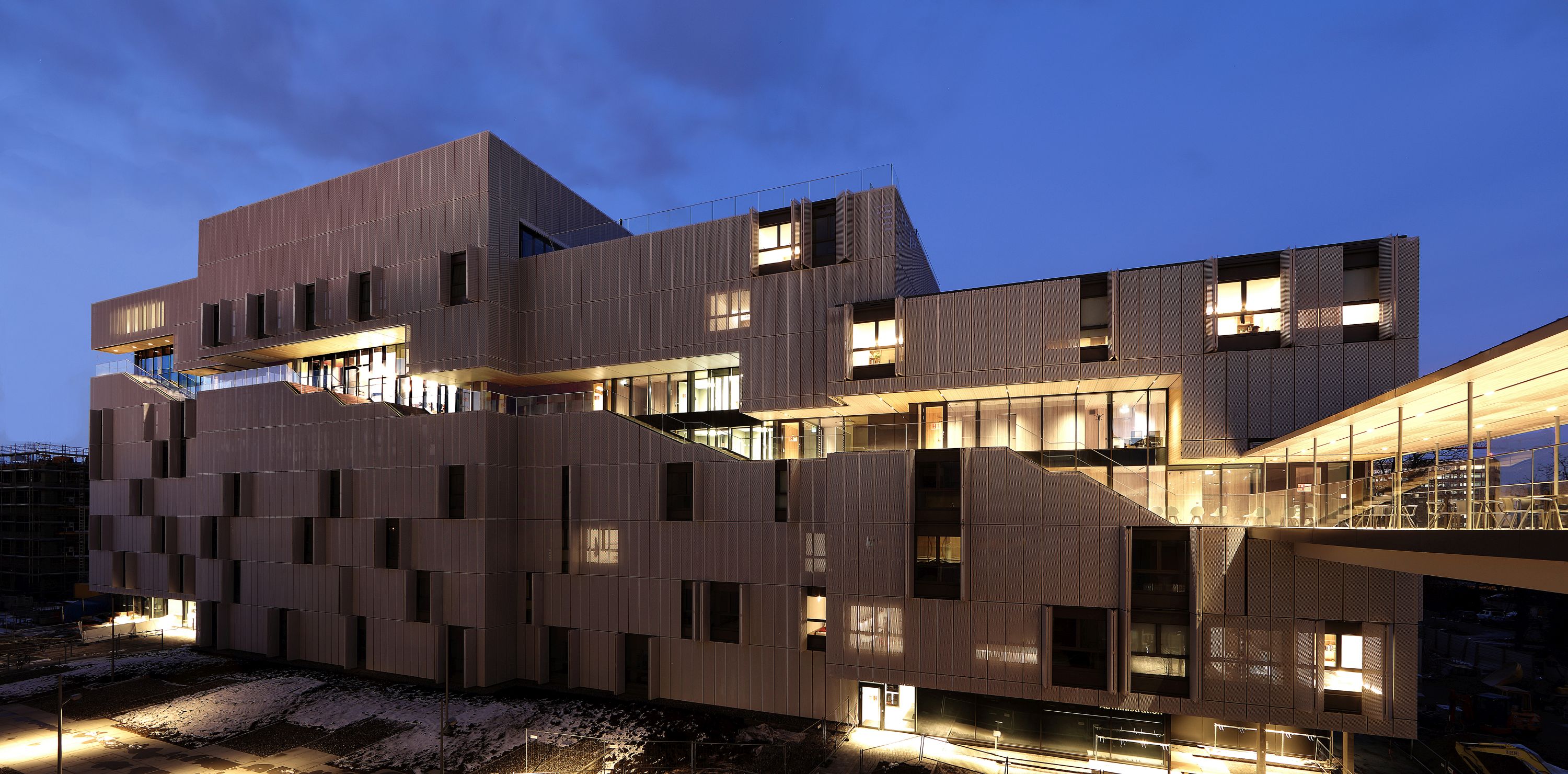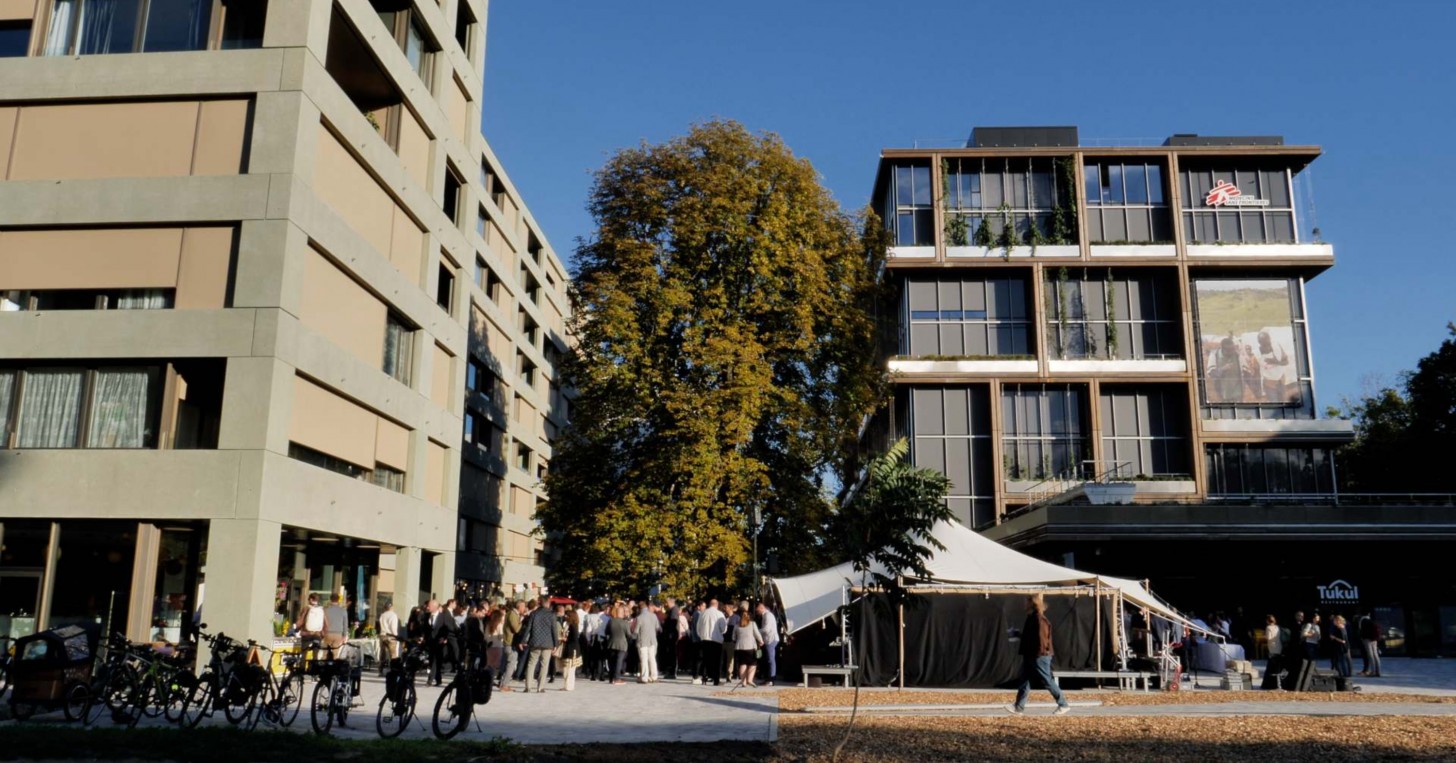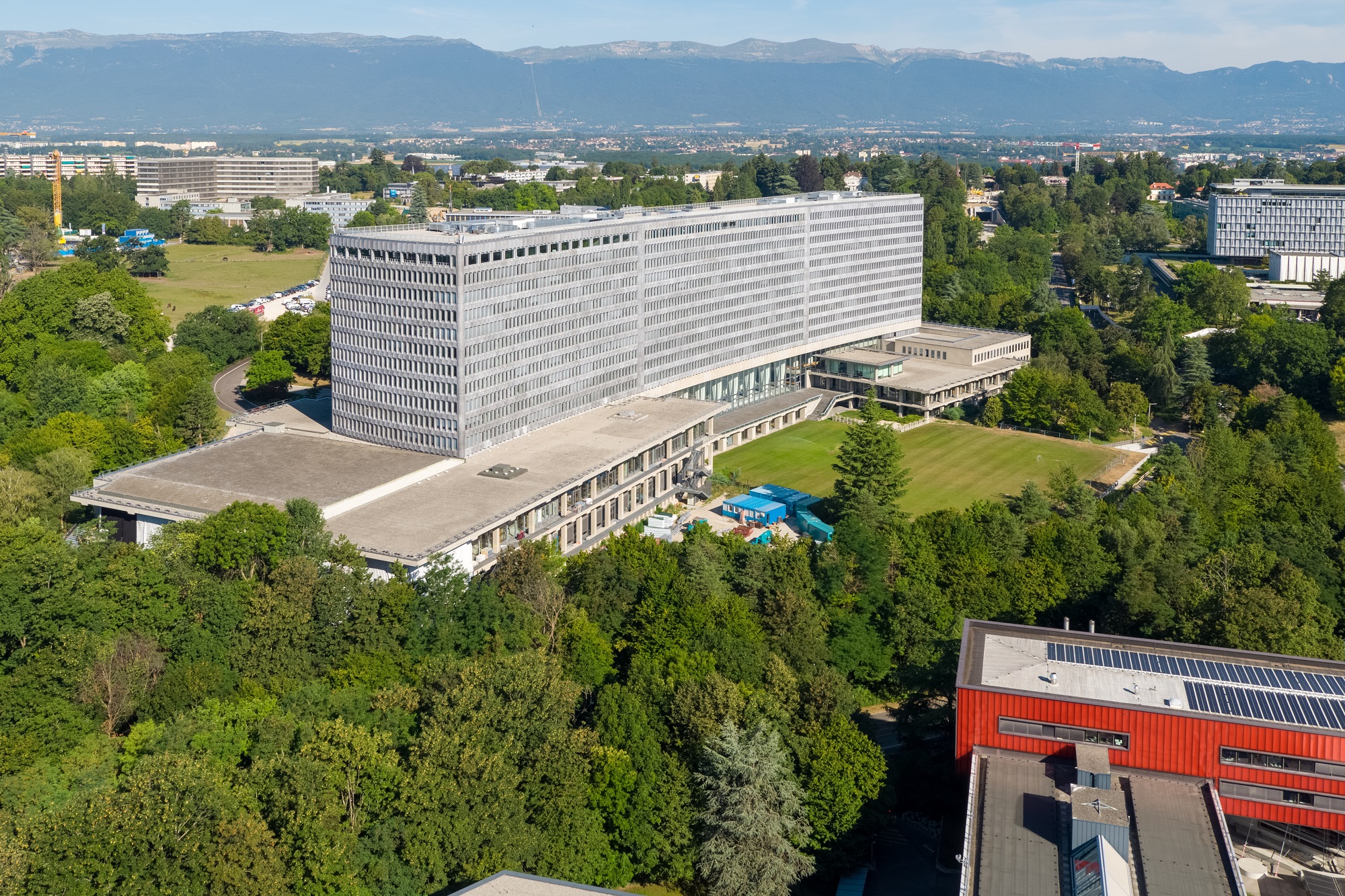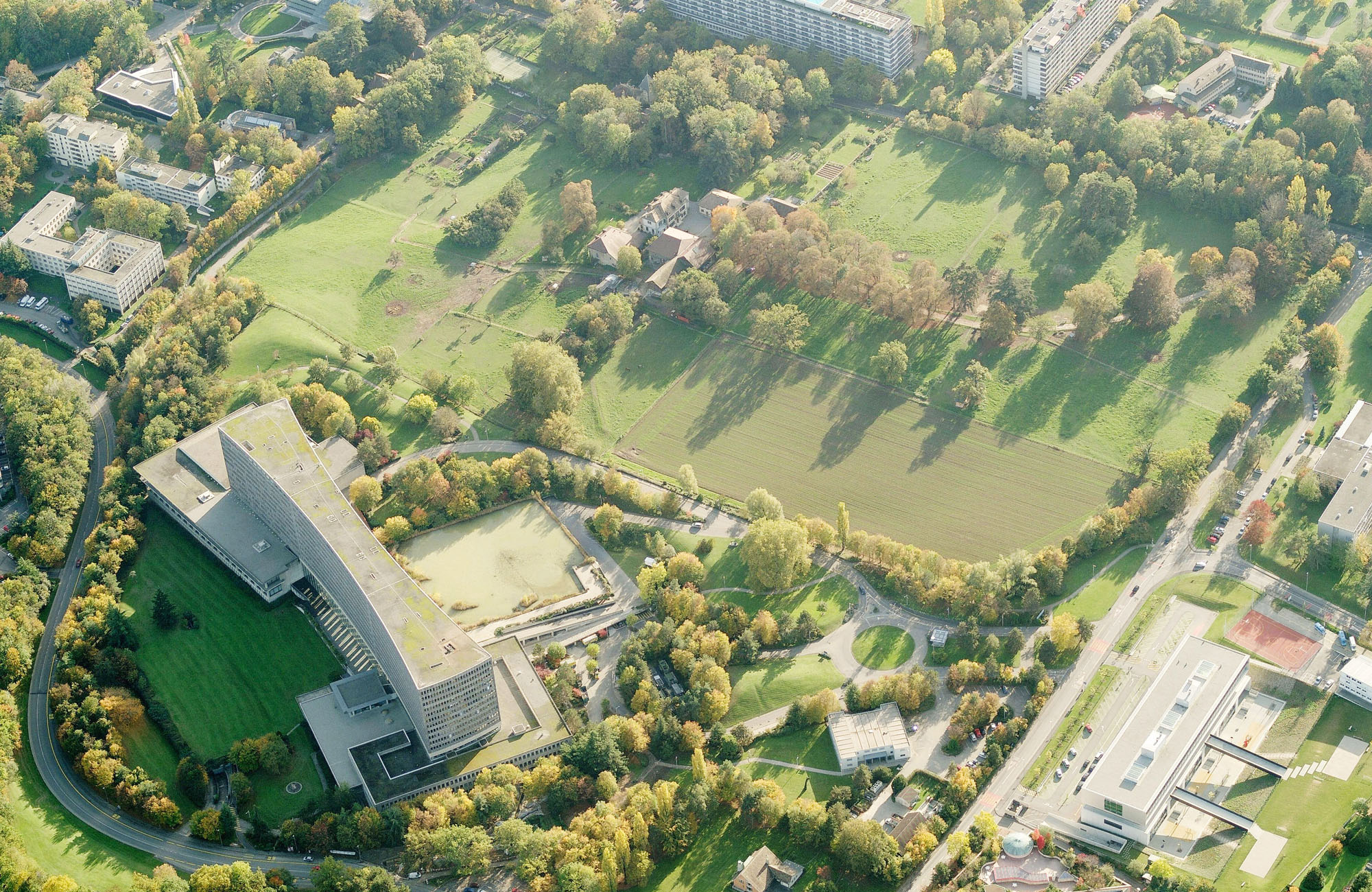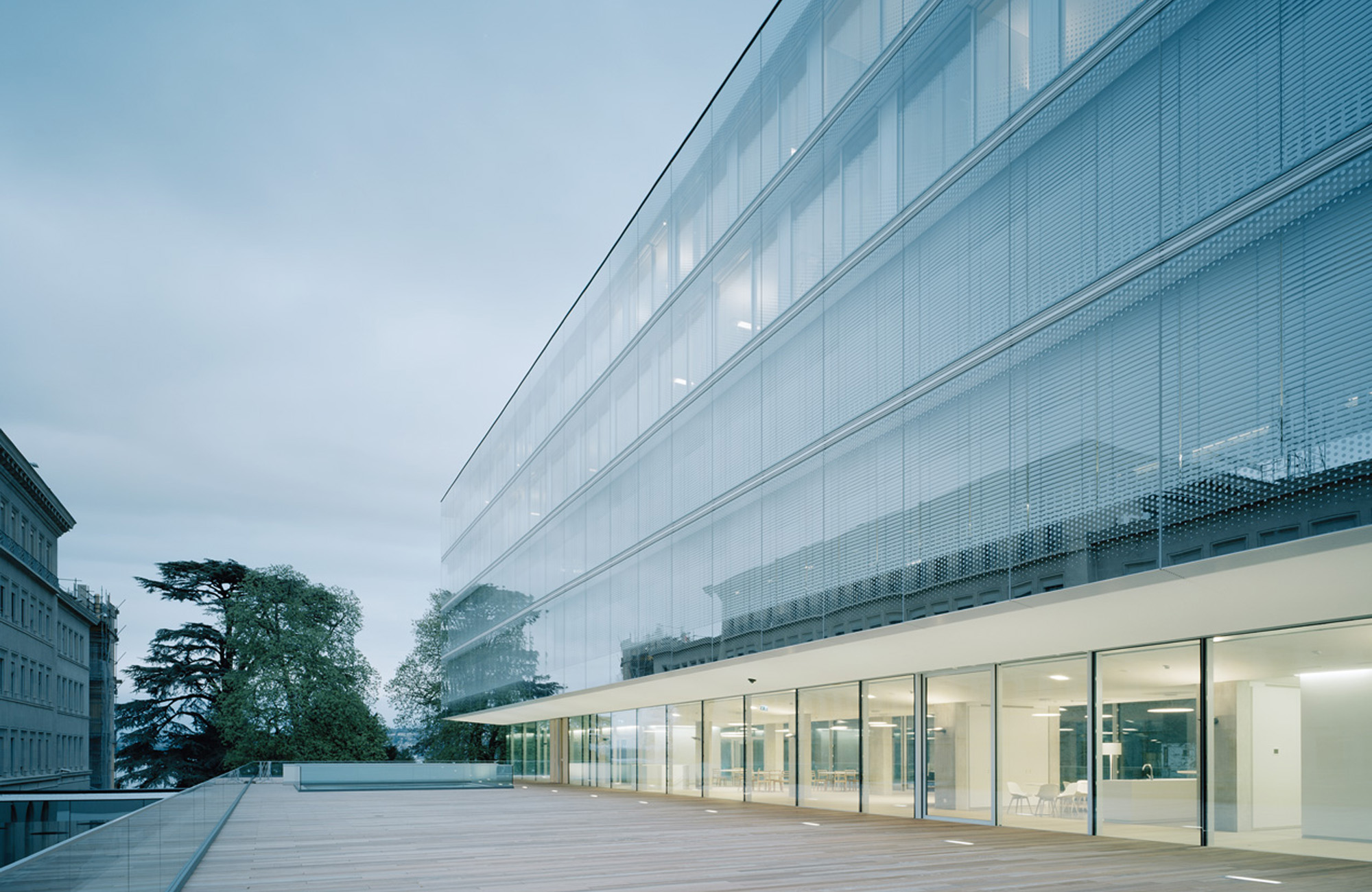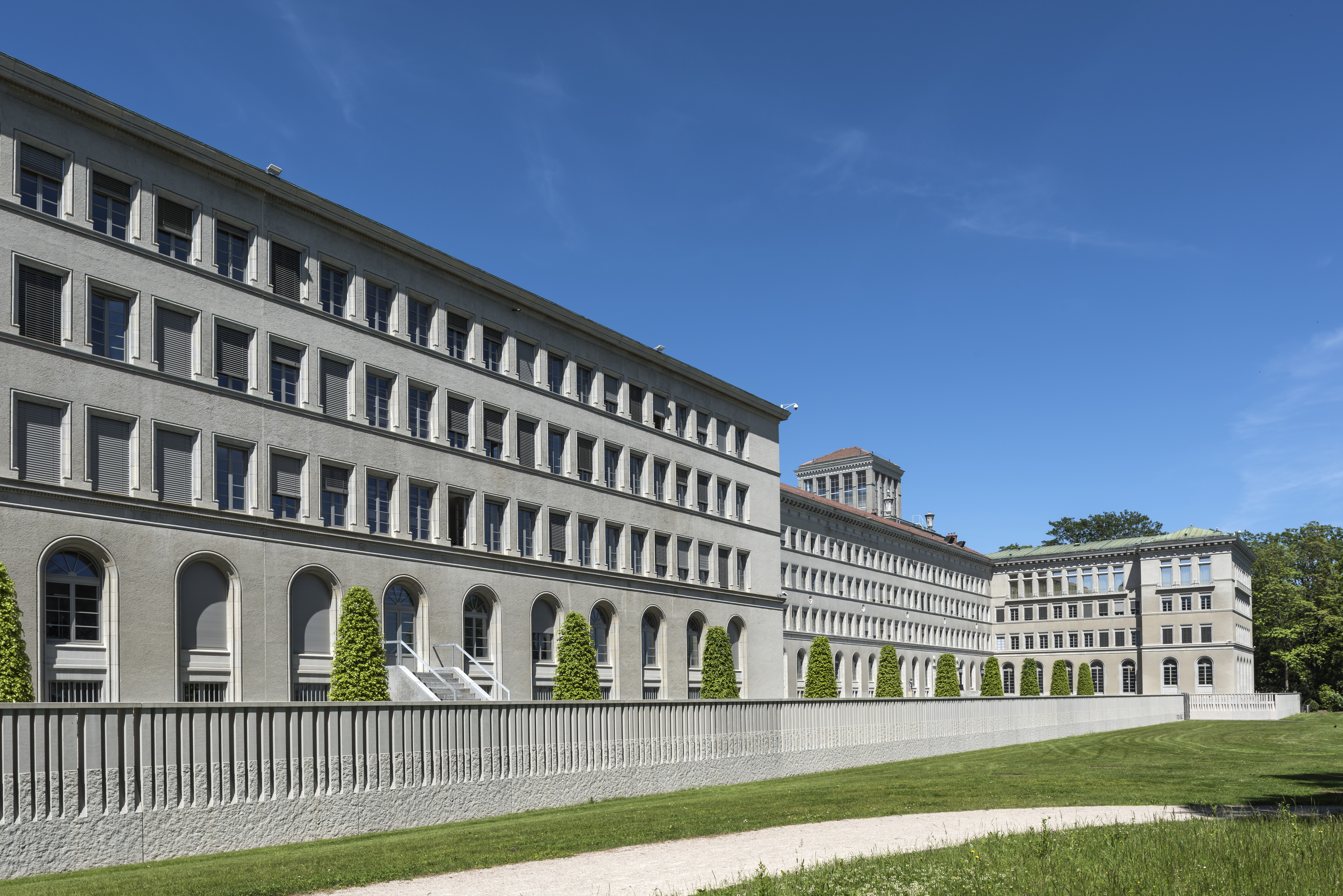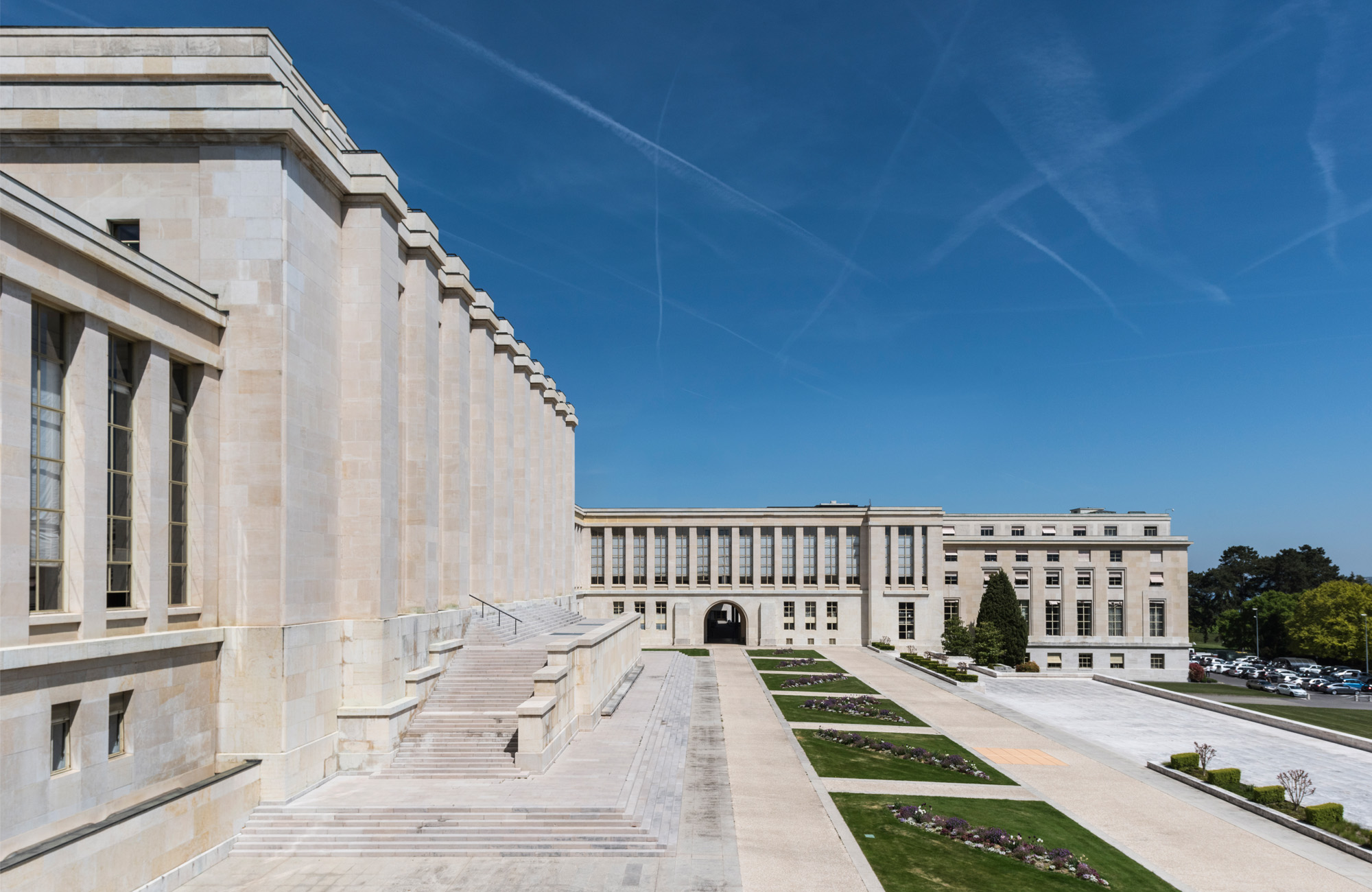Buildings and Architecture
International organizations need buildings for their offices and meeting rooms. The facilities built to host these organizations since the 1920s have profoundly transformed the urban landscape of Geneva, a development that has been consistently supported and facilitated by the local and national authorities.
Switzerland faces a number of policy challenges with regard to the international organizations it hosts, most of which currently occupy buildings dating from the 1960s and 1970s. This older building stock has suffered significant deterioration due to intensive use of workspaces and meeting rooms, combined with a lack of regular renovations. Moreover, competition between countries has increased considerably in recent years, heightening the risk of international organizations deciding to relocate away from Geneva.
In response to these challenges, the Federal Council, the Canton and the City of Geneva in 2013 adopted a joint strategy for the future of international Geneva that focuses on meeting international organizations’ needs in terms of real estate. Keeping the existing infrastructure in good working order is essential to maintain Geneva’s role as a centre of global governance and multilateral diplomacy.
The Swiss government supports construction projects initiated by international organizations through preferential-rate loans administered by the Building Foundation for International Organizations (FIPOI). These loans are repayable over 50 years for new buildings and 30 years for renovation works. FIPOI is a private foundation established by the Canton of Geneva and the Swiss Confederation and tasked with awarding and monitoring loans to international organizations.
To date, the Canton of Geneva, the Swiss Confederation and the City of Geneva have granted loans totalling approximately 890 million Swiss francs for various international organization-led renovation and construction projects, which are slated for completion in the next few years.
In addition to this loan programme, local and national authorities work together to support international organizations by delivering top-notch public services, particularly in the areas of urban planning, transportation, energy and safety.
Find out more about the contribution of the Canton of Geneva to International Geneva on www.ge.ch
UN Geneva: Renovation of the Palais des Nations and new building
The United Nations Office at Geneva (UNOG) has embarked on a comprehensive renovation of its headquarters combined with the construction of new building. The aim of this project is to modernize the existing infrastructure, bring it into line with current safety and energy standards, and add 700 workplaces.
WHO: Renovation of the headquarters and new building
The World Health Organization (WHO) is currently renovating its headquarters and has broken ground on a new building to replace a number of temporary annexes. The goal is to provide the organization with offices that are energy efficient while lowering maintenance costs and offering greater operational flexibility.
Architecture of the WHO headquarters extension
Learn more about WHO Geneva headquarters
ITU: New headquarters
The International Telecommunication Union (ITU) is planning a new energy-efficient and environmentally friendly headquarters to replace its now-obsolete "Varembé" building.
Cité Internationale du Grand Morillon
The Cité Internationale du Grand Morillon is located on the corner of Route de Ferney and Route des Morillons, at the heart of the "Garden of Nations" district. Three organizations worked together to create a harmonious landscape design for the area, which is open to the public.
Project presentation
Official inauguration on 19 September 2022
MSF headquarters
Graduate Institute student residence
Terra & Casa Foundation apartments
ILO: Renovation of the headquarters
The headquarters of the International Labour Organization (ILO), built in the 1970s, went through a complete renovation to meet current safety and energy standards and to provide employees with a socially and environmentally responsible workplace.
Details of the architect's brief
Project management
Project details
IFRC: New headquarters
Inaugurated on 6 May 2019, the new headquarters of the International Federation of Red Cross and Red Crescent Societies (IFRC) bring together all the organization’s employees under one roof.
Global Health Campus
The Global Health Campus opened its doors in March 2018. It brings together global health partners to unlock the collective potential of their distinctive missions.
WTO: Renovation of the headquarters and new building
At the end of the 2012, the World Trade Organization (WTO) completed the renovation and extension of its headquarters, thus consolidating its long-term commitment to Geneva.
This book retraces the various stages leading to the construction of the buildings that make up the city's international quarter today.
The turbulent history of office architecture writ large is embedded in the canton's small territory, featuring, from the start, a quarrel about modernity, instigated by Le Corbusier over the Palais des Nations. From the austere stone building inaugurated in 1926 for the International Labour Organisation to the glass bubbles occupied by the Maison de la Paix since 2014, this architectural journey is recounted for the firt time here.
Discover the architectural history of international organizations in Geneva
International Geneva, 100 years of architecture
by Joëlle Kuntz
